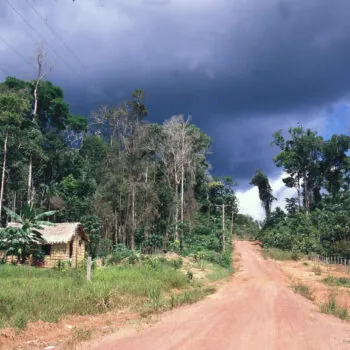The transition to climate neutrality is an ecological, social, political and economic opportunity for countries in Central and Eastern Europe (CEE). It offers a means to face multiple crises and establish a competitive position in the global economy. This briefing shows how Czechia and Poland can use the transition to their benefit – including significant gains for their GDP. We also explore why the transition in the region has so far been slow.
Czechia and Poland are significant political players and have the potential to develop activities that would support a green economy. These two industrial powers can be strategic partners and leaders not only within the region, but also in the European Union as a whole. To do so, they must create the policy and generate the financial flows to achieve the climate transition. The estimated investment gap is €168 billion in Czechia and €380 billion in Poland by 2050.
While the transition offers multiple benefits, the countries face several barriers. These include: a lack of public and political support, insufficient policy guidance, suboptimal use of public funds, under-developed capital markets, and the scarcity of skilled labour. Czechia and Poland should explore opportunities to face the transition. This will minimise risk, create synergies and build an attractive regional market for transition investment.
Key recommendations for transition finance in Central and Eastern Europe
Build up public and political support
- The Czech and Polish governments should build and communicate positive transition narratives that consider the needs of all stakeholders.
Provide targeted policy guidance and technical assistance
- The Czech and Polish governments should build a comprehensive body of transition-aligned policies and strategies to guide the economy on the transition path. This includes sectoral pathways for transition to climate neutrality and technical assistance, especially for SMEs.
Maximise the impact of public investments
- Development banks and state funds in Czechia and Poland should align funding and project assessment with the EU Taxonomy, Corporate Sustainability Reporting Directive (CSRD) and Corporate Sustainability Due Diligence Directive (CSDDD). Blended financial mechanisms should be offered to finance transition-oriented projects non-bankable by banks and markets.
- Czech and Polish financial regulation and supervision authorities should scale up Paris-aligned capital requirements and climate stress testing, to motivate private investment in the transition. Czechia should follow Poland’s lead and join the Network for Greening the Financial System (NGFS).
Develop capital markets
- Czech finance authorities should design and implement a strategy to develop capital markets that is aligned with the transition and inclusive towards SMEs, following their Polish counterparts.
- The Czech Ministry of Finance should consider issuing green or sustainability-linked bonds, to invest in the transition and send a clear market signal.
Foster investment in skills
- Public administrations at national and regional levels in both countries should invest in internal capacities to deliver the transition to climate neutrality. Businesses should invest in upgrading and upskilling aimed at increased value added and innovation for the future green economy.
- Governments and businesses in Czechia and Poland should proactively invest in the just transition, offering requalification opportunities to workers impacted by decarbonisation.


